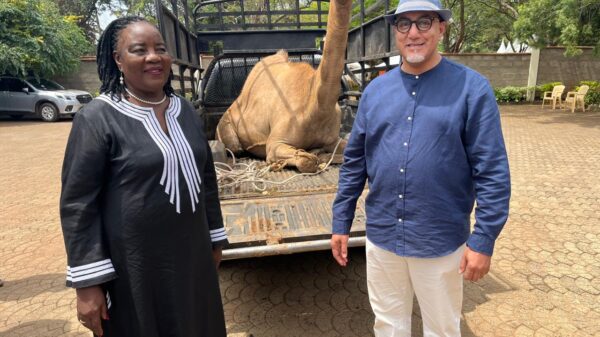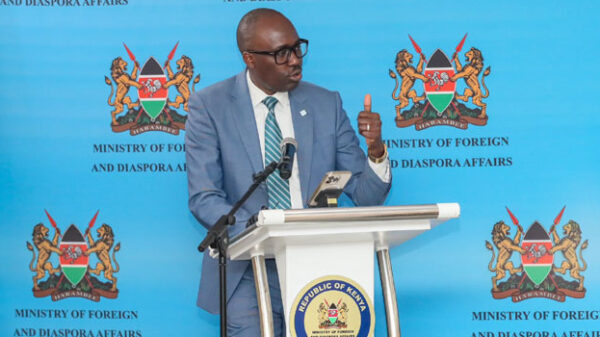Seth Onyango, bird story agency
African governments are moving faster than most of the world to put soil health at the centre of climate action, according to a new analysis that highlights a major blind spot in global climate planning. A review of Nationally Determined Contributions by the Save Soil campaign shows that 70% of countries still do not treat soil or agriculture as meaningful mitigation tools — even though soils are the planet’s largest terrestrial carbon sink. The report came on the back of COP30 in Belém, Brazil where campaigners hoped soil-carbon targets will finally be recognised.
“Soils can deliver close to 27% of the emissions cuts needed to keep warming below 2°C, but most countries aren’t looking in that direction,” said Henry Asplin, spokesperson of Save Soil, the UN-backed Save Soil campaign. “African nations are among the few that are.”
São Tomé and Príncipe stand out with nearly 89% of its territory covered by forestry and agroforestry systems that support shade-grown cocoa, coffee and pepper — farming that keeps vegetation cover intact and protects soil from erosion. The government is pushing a “100% Bio” national strategy, expanding agroecological practices and planning to restore 36,000 hectares of degraded land by 2035. Officials involved in the country’s climate plans say soil-focused projects are already tied to food security, export earnings and rural jobs, which makes the work difficult to ignore.
Mauritius has built a similar momentum. The country contributes only 0.1% of global greenhouse gas emissions but faces a steady run of droughts, flash floods and cyclones that erode farmland and threaten coastal communities.
In response, authorities have planted 500,000 native trees and plan to expand native forest restoration from 900 to 1,500 hectares by 2035. Agriculture occupies 42% of the island, and policies now favour organic farming, reduced pesticide use and a 25% cut in chemical fertiliser imports.
Officials are also targeting a 10% reduction in methane and nitrous oxide emissions as part of a wider shift to climate-smart farming. Mangrove restoration has become a central pillar of the island’s adaptation plans, backed by community groups and tourism operators who have watched coastlines retreat year after year.
The report argues that these efforts offer a blueprint for regions where soils have flipped from storing carbon to releasing it. Roughly 40% of global land is already degraded, and the analysis warns that losing even 1% of Europe’s soil carbon would generate emissions equivalent to one billion cars in a year.
“We’re letting carbon leak out of soils at a disturbing rate,” said Praveena Sridhar of the Save Soil Movement. “Regenerative practices can reverse that.”
Evidence cited from the British Ecological Society and the World Bank shows where the gains come from: cover crops, crop diversification, no-till farming and organic amendments that rebuild soil structure and restore biodiversity. These methods also cut fertiliser-related emissions, which could fall by as much as 80% by 2050 if widely adopted.
Campaigners argue the transition doesn’t require sweeping reforms to begin with. Many practices — keeping green cover on fields through the year, rotating crops, reducing excessive tillage — are already used by farmers across Africa, South Asia and Latin America. The problem, they say, is that global climate policy often treats soil as scenery rather than infrastructure.
What makes Africa’s early movers stand out is how soil health is tied to national priorities. In São Tomé, agroforestry supports export crops and buffers rural incomes against volatile markets. In Mauritius, restoring coastal vegetation and inland forests is now part of disaster-preparedness and tourism planning. Governments see soil as an asset that protects multiple sectors at once.
Save Soil’s analysis calls for soil-carbon accounting and soil-monitoring systems to be built into international financing frameworks. Current flows, the report notes, are still aimed largely at energy and industrial systems, even though soils store more carbon than the atmosphere and all plant life combined.
Campaigners hope to see soil health formally recognised as a mitigation pathway — not just an adaptation measure. That shift, they say, would open the door to soil-focused climate finance, national restoration targets and stronger incentives for regenerative agriculture.
For now, African nations remain among the few showing what widespread soil restoration could look like. With more countries expected to update their NDCs next year, the campaign hopes that leadership on soil carbon won’t remain this concentrated for long.
bird story agency













































